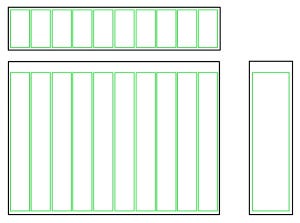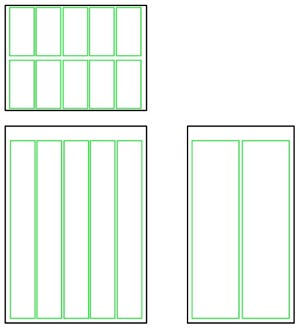All sides agree: Cube is as efficient as can be
January 30, 2014
We have an opportunity in the packaging industry to create an environmentally friendly pack by maximizing the surface area to volume ratio via the cube.
For any given paperboard container, a surface area to volume ratio, or SA:V, can be determined by dividing the surface area of the material by the volume inside the container. Essentially, this number tells us how efficiently the package uses the material to contain the volume inside.
Material savings: If we take this same principle and apply it to an existing product package, we can calculate actual material savings. Since many products come in paperboard boxes, my research focused on one product category in particular that has the potential for significant material savings with minimal changes: granola bars and cereal bars.
Some of the dimensions on these cartons are related to the product shape, such as the depth, but let's take a look at the potential savings if we use a more cube-like approach.
In the example shown, we simply change the arrangement of product from 1x10 into a 2x5 arrangement. Without changing the actual product shape, the new carton will still maintain the same height as the old one. Even by changing just the width and depth, the improved design uses 20 percent less material per carton.

Current standard granola bar package

Improved granola bar packaging
Marketing: It's safe to say that, in packaging, almost nothing happens to the packaging without approval from marketing. Reducing the primary display panel of a folding carton can actually improve the shelf presence if two products now fit where only one would before.
Another benefit from the new environmentally friendly package design is the opportunity for an environmental rebranding to boost product awareness and sales. In the past decade, consumers have become more nutritionally aware than food companies ever imagined, and it is only a matter of time before consumers demand a better environmental package.
Manufacturing: The simplicity behind this concept is that it requires few changes to be made to an existing production or filling line. The new design can use the same paperboard material and the same printing method already in use. The primary pouch remains unchanged as does the product itself. This keeps customers familiar with the product shape and loyal to the product.
A manufacturer may even choose to reduce the thickness of the paperboard since the cube shape will be structurally stronger than the current rectangle carton. The improved design, paired with a thinner-gauge paperboard can result in savings of more than 30 percent material per carton.
In addition, a TOPS palletizing evaluation also showed that the new design yields better pallet efficiency while accommodating nearly 100 more units per load—which means distribution is also improved.
We need to be more proactive and make changes in our products that will complement our environmental efforts. Sooner or later, companies will learn that it's hip to be square.
Author Zach Wheeler gets to play with packages as a student enrolled in San Jose State University's packaging curriculum. Contact him at [email protected].
.
About the Author(s)
You May Also Like


